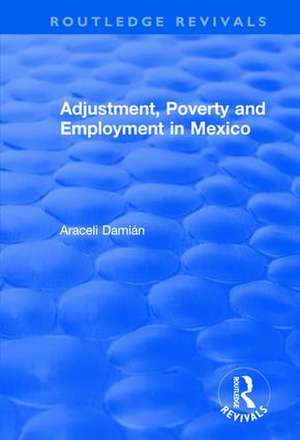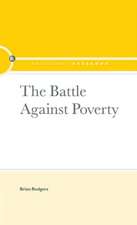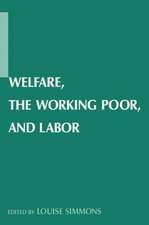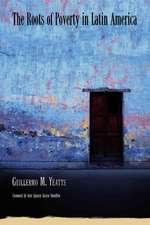Adjustment, Poverty and Employment in Mexico
Autor Araceli Damianen Limba Engleză Paperback – 31 dec 2018
| Toate formatele și edițiile | Preț | Express |
|---|---|---|
| Paperback (1) | 189.54 lei 6-8 săpt. | |
| Taylor & Francis – 31 dec 2018 | 189.54 lei 6-8 săpt. | |
| Hardback (1) | 629.30 lei 6-8 săpt. | |
| Taylor & Francis – 14 sep 2017 | 629.30 lei 6-8 săpt. |
Preț: 189.54 lei
Preț vechi: 230.09 lei
-18% Nou
Puncte Express: 284
Preț estimativ în valută:
36.27€ • 37.79$ • 30.03£
36.27€ • 37.79$ • 30.03£
Carte tipărită la comandă
Livrare economică 03-17 aprilie
Preluare comenzi: 021 569.72.76
Specificații
ISBN-13: 9781138728622
ISBN-10: 1138728624
Pagini: 286
Dimensiuni: 150 x 220 x 17 mm
Greutate: 0.39 kg
Ediția:1
Editura: Taylor & Francis
Colecția Routledge
Locul publicării:Oxford, United Kingdom
ISBN-10: 1138728624
Pagini: 286
Dimensiuni: 150 x 220 x 17 mm
Greutate: 0.39 kg
Ediția:1
Editura: Taylor & Francis
Colecția Routledge
Locul publicării:Oxford, United Kingdom
Cuprins
Part 1 Structural adjustment - an overview: structural adjustment - the end of a National Economic Project-- the World Bank structural adjustment packages-- government and control of economic process-- adjustment and poverty-- methodological issues of the relationship of adjustment and poverty. Part 2 Adjustment policies in Mexico-- background to the 1982 economic crisis-- the Mexican economic reform 1982-1994-- the impact of adjustment policies on poverty. Part 3 Poverty and household living standards: problems of data sources used to measure poverty-- methods used in Mexico to measure poverty-- the measurement of poverty in Mexico-- trends in poverty in Mexico after the 1982 economic crisis-- improvement in some wellbeing indicators-- poverty and living conditions in Mexico City-- changes in household living conditions in Xalpa, Mexico City. Part 4 Labour force participation trends (1979-1994): employment data sources and employment definitions-- labour force participation rates I (employment surveys)-- women's work-- work by adolescents-- labour force participation rates II (income and expenditure surveys)-- interaction between income poverty and working effort. Part 5 Labour markets in Mexico City and Xalpa: employment by occupational categories in Mexico City-- Xalpa - household members participation in the labour markets. Part 6 Conclusions: criticisms of the Washington Consensus and the Mexican case-- stabilization, adjustment and poverty-- poverty and the labour market. Appendix - the methodology for measuring poverty-- the Integrated Poverty Measurement Method (IPMM)-- the Poverty Line (PL) Method based on a Normative Basket of Essential Satisfiers (NBES)-- adjusting household income to National Accounts (NA).
Descriere
This title was first published in 2000: Analyzing the poverty trends in Mexico during the 1980s and early 1990s, this work is concerned with the extent to which changes in the levels of poverty have modified the extent of participation in the labour market.



















